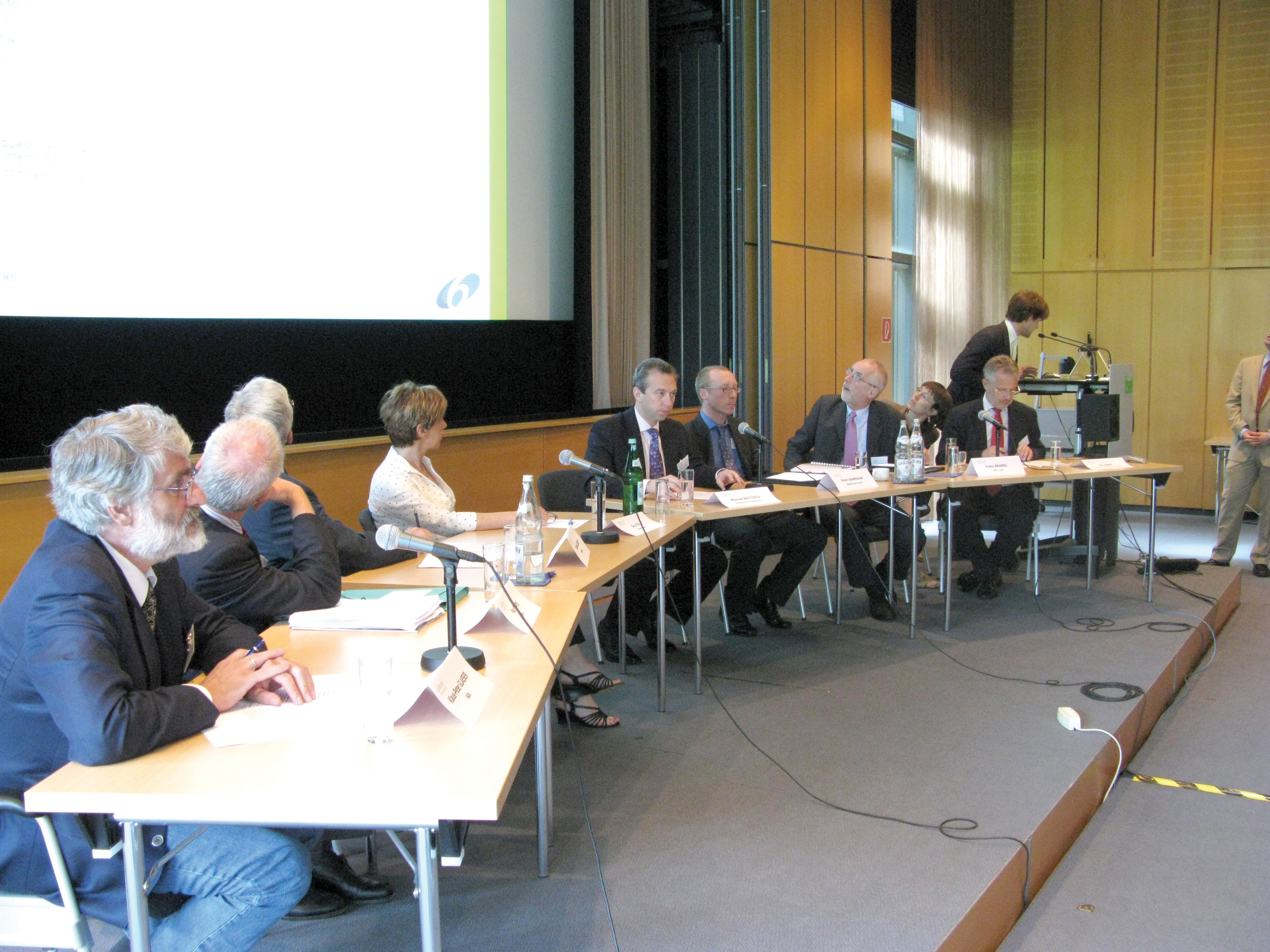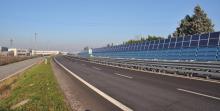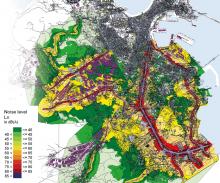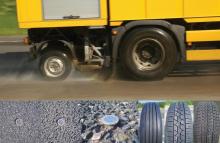
The
The purpose of SILENCE is to develop an integrated methodology and technology for the improved control of surface transport noise in urban areas. This includes noise control at the source, noise propagation, noise emission, and the human perception of noise. The SILENCE project has 48 partners from 14 countries and cost €15.8 million.
The conference, which took place at the HQ of the Federal Highway Research Institute (
Another important objective was to define the best tyres for lowering tyre/road noise. This included building a series of prototypes. As tyre constructions always have to fulfil many different criteria, it was not easy to reach this goal at the first attempt, says the report. Four loops of tyres were necessary to find constructions which were suitable to be tested on normal urban roads.
Another activity dealt with new production technologies for surfaces on urban main roads. An improved mix design was used to construct four test sections on an urban road at Kastrupvej in Copenhagen, with a maximum aggregate size of 4 and 6m and compared to a SMA 0/11, which was the reference surface. Far-field sound measurements at 7.5m from the middle of the road are only possible between the buildings, and therefore also near-field measurements with sound intensity probes fixed at the vehicle were performed. Two probes near the leading and trailing edge of the tyre were used. Compared with the reference tyre, all constructions were less noisy.
New noise reducing surfaces were also developed for both urban streets and urban main roads. Some of these surfaces were tested both on existing roads in Copenhagen and Malmö and in a rotating drum facility at the German Federal Highway Research Centre (BASt).
The possible surface solutions included different noise optimised thin layer surfacings, stone mastic asphalts, surface dressings, paver blocks with porous rubber surfaces and a special Gussasphalt with flat top chippings.
One of the more promising results was thin layer surfacings that according to Statistical Pass-by (SPB) measurements gave noise reductions of up to 4dB compared to a reference pavement. These results were supported by results from the indoor drum testing.
As for the maintenance of low-noise pavements, guidelines were developed with advice aimed at prolonging the acoustic service life of various noise-reducing surfacings.
Finally, databases with detailed noise performance information of main types of low-noise surfaces were produced. These databases can help decision makers to rationally choose low-noise road surfaces as a traffic noise control measure in urban areas.
An in-service method for roadside noise control and enforcement for motorcycles and cars was developed and tested. The main aim here is to achieve a reduction in the noise impact of vehicles equipped with illegal noisy silencers.
A system for automatic monitoring of noise from road vehicles in use was also tested and results are presented in a report on the monitoring of road vehicles in-use.
A study of driver support systems for quiet vehicle operation looked into engine speed limiters and various in-vehicle systems for giving information on road layout, traffic conditions and driving patterns.
Studies on the noise impact of automatic traffic control, chicanes (tight serpentine curves) and green waves as well as on the noise effect of various intersection layouts (roundabout, crossings with and without signals) were also reported. [A green wave is an intentionally induced phenomenon, in which a series of traffic lights, usually three or more, are coordinated to allow continuous traffic flow over several intersections in one main direction.] Next step Local authorities now face the complex task of developing noise action plans in line with the European Environmental Noise Directive (END). These plans should address the priorities identified in the noise maps (first requirement of the Directive), and present concrete measures to tackle the noise problem in hot spot areas, as well as long-term strategies to avoid and abate noise.
To support local authorities in this complex task, the SILENCE project has developed a guidebook which comprises recommendations on organisational settings, on the involvement of stakeholders and the public, the action planning process, as well as on a range of concrete noise abatement measures.
Speaking at the conference, Barbara Griefahn (IFADO) said noise abatement is an essential element of public health care, noting that heart disease is directly related to noise levels and is on the increase. "Annoyance is a loss of quality of life," she added. Franz Brandl, AVL, one of the participating companies, reminded delegates that END calls for governments and local authorities to make action plans available, with a revision every five years and be made to the general public. By June 2009, the EC will publish a summary report on strategic noise maps and actions plans, he added.
He said by combining a number of methodologies and measures, a considerable noise reduction of up to 10dBA of road and noise rail can be achieved.
E. Nijman, (
"The realisation of competitive cars exhibiting state of the art noise levels and meting Kyoto fuel consumption targets constitutes a tremendous challenge to the OEMs in the coming decennium. Achieving such goals requires....continuous development of progressively more sophisticated analysis and optimisation tools, technologies and materials is necessary." Commenting on road noise and surfaces, Guy Descornet, BRRC, Belgium, said that given that the road noise levels threshold of annoyance is 55dBA and unacceptability was 65 dBA, then the road surface makes a difference. He said porous surfaces were not the optimum solution, since they could be difficult to repair and there were question marks over durability, noise performance, and natural cleaning in cities. He felt those thin surfacings with pre-coated stone and open graded offered a better solution. Gussasphalt, a pro-elastic rubber based material offered another solution.
Hans Bendtsen, Denmark's Road Research Institute, said noise levels had affected house prices, and that the annual cost of noise was running at around €700 million in his country.
During a panel debate, chaired by Manual Battista, European Director of World Highways, Klaus-Peter Glaeser, BASt, said that while vehicles have got quieter, there are more of them, and that was rising. Sive Leth of Bombardier, the rail company, said the rail industry had a few things to do, such as reducing tonal and screeching. Franz Brandl believed that the motorcycle noise needed attention, and was a particular problem during the weekend period.
Paul de Vos,
Commenting on tyre noise, Claude Contet said car makers were working with others. He said it is a continuous evolution, with cost part of the equation. "We have many things to do to reduce noise on both the interior and exterior of a car."
Paul de Vos said to make noise a bigger political and public issue required a bottom-up movement. "Top down little is happening, and noise requires a system approach," he said.
Steve Crawshaw, Bristol council, UK, said surveys showed over 50% of people are annoyed by noise, with some people exposed to 75dBA levels. "They just accept it, but are annoyed by it. He said that in the UK the government was responsible for developing noise maps, not local authorities (the exception being his authority), adding it should be a local authority responsibility. "The most promising noise reduction solution would be to reduce speed levels, while providing benefits for air quality as well."
Glaser said accident hot spots should be able to choose the right surfacing. Porous asphalt is silent, but suffers from clogging.
Asked by the panel chairman for one major policy drive or shift in current policy that would change noise levels, Content said what was needed was a citizen's attitude, while Paul de Vos called for the promotion of electric scooters. "Let's make it cool, and keep oil price high to reduce demand."
Cultural differences
An online survey of 4,124 European residents conducted by SILENCE revealed that annoyance due to noise from railway and road traffic is associated with noise load as expressed by the day-evening-night level (Lden) or the night level (Lnight). With equal noise levels for road and for rail traffic, annoyance is lower for railway noise. Annoyance also increases with age and noise sensitivity.
Even at the same noise load, participants living in main streets are more annoyed than persons living in side streets. The reason for this may be differences in traffic characteristics. The comparison of respondents from Austria, Germany, Italy, Poland and the Netherlands showed a more or less steady increase in annoyance with increasing noise load. There are considerable differences however, and annoyance was significantly higher in Poland and Germany and lower in Italy and Austria.
Participants from the five countries differ in the annoyance-related factors of age, noise sensitivity and type of street. The differences between countries remained stable even after these factors were controlled in statistical analyses, meaning that other factors than these are the cause of these 'cultural' differences.







